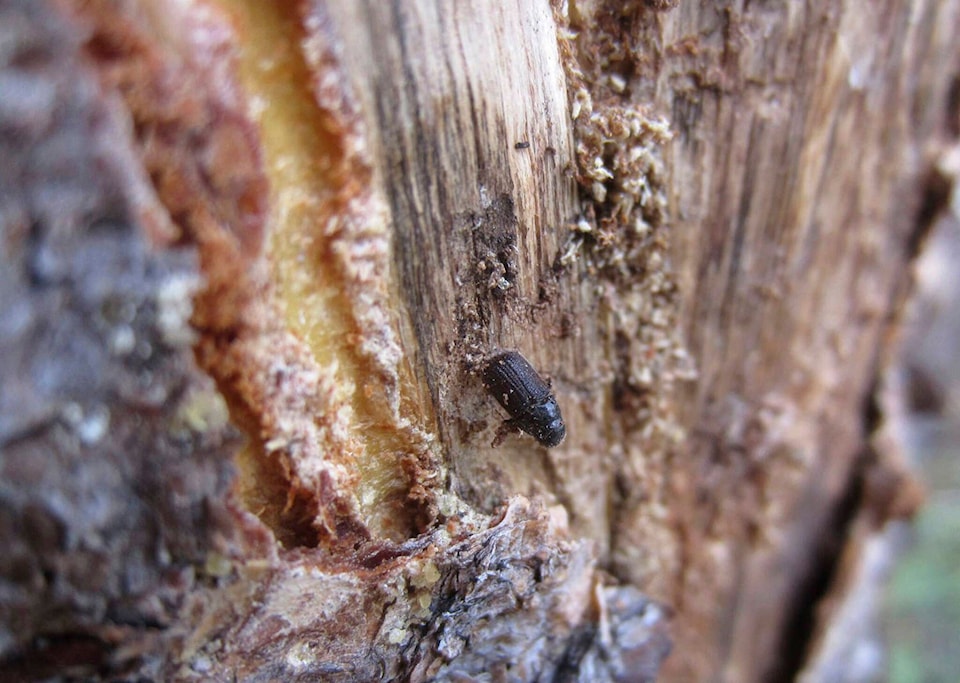Mother Nature gets a lot of the credit for reducing mountain pine beetle populations.
However, a significant helping hand was provided by provincial and forestry industry efforts to limit the spread of the tree-killing bugs.
After huge clouds of beetles crossed the mountains from B.C. into Alberta, the provincial government launched an action plan in 2007 that included everything from treating individual trees to widespread logging.
In some areas, contractors were hired to remove all of the trees the pine beetles rely on for food. A targeted approach has also been taken where single trees are identified, cut and burned or chipped.
Long-term strategies for managing pine beetles have also been developed.
The Pine Strategy was designed to address the large percentage of older pine trees in the province’s forests. About 60 per cent of the province’s pines are 80 years and older and more susceptible to insect attacks and wildfires.
Under this strategy, Alberta has identified the most susceptible tree stands and worked with forestry companies to amend their current management plans to reduce the amount of susceptible pine in their operations areas by up to 75 per cent by 2026.
The goal is to create a broader cross-section of different tree-age classes in the forest that will be more resilient to threats from destructive insects, disease and wildfire.
Sundre Forest Products has worked for more than 15 years with University of British Columbia experts to develop plans of attack to hinder the spread of the beetles.
Tree harvesting was stepped up in areas of the forest most susceptible to the beetles. Removing the food source has had a dramatic impact on the size of beetle populations, said forestry superintendent Tom Daniels, who oversees the company’s forest management area in the West Country.
The province’s effort to identify and destroy trees infected by the beetles also went a long way to helping stem the tide.
Recent seasonal cold snaps have played a critical role in slowing the beetles’ spread.
“Probably the last three years we’ve had extreme cold during the winter,” said Daniels. “It hasn’t been enough to kill the population, but certainly has kicked the population back.”
Also helping has been the timing of the cold snaps, in early fall and late spring. A cold snap early in the fall hits beetles before they have fully developed their own natural antifreeze. Likewise, late spring cold snaps catch them when their antifreeze reserves are diminished.
